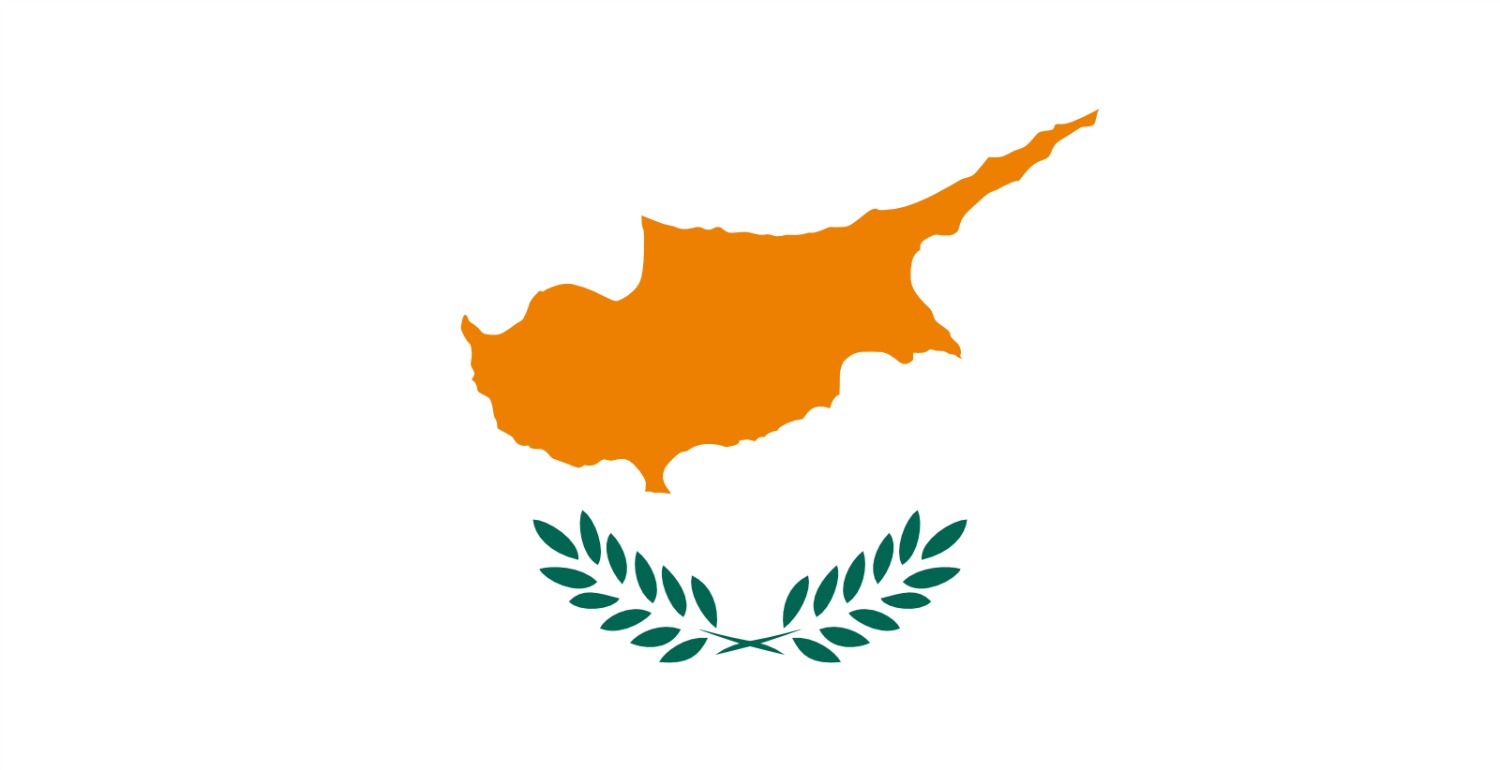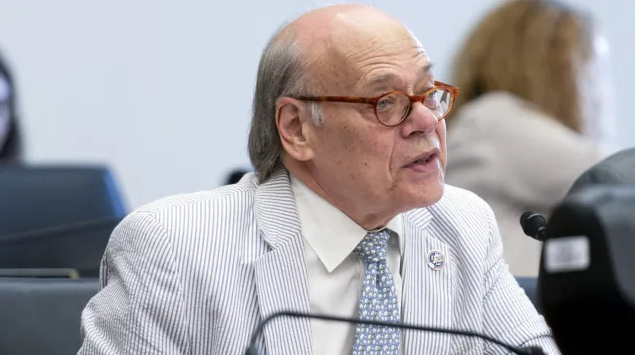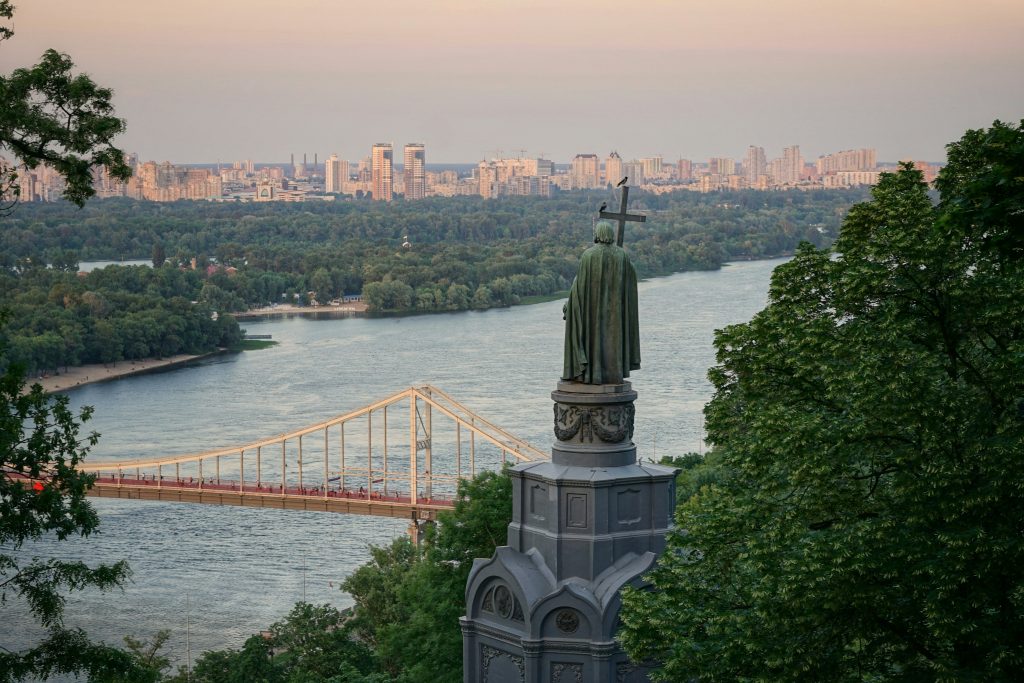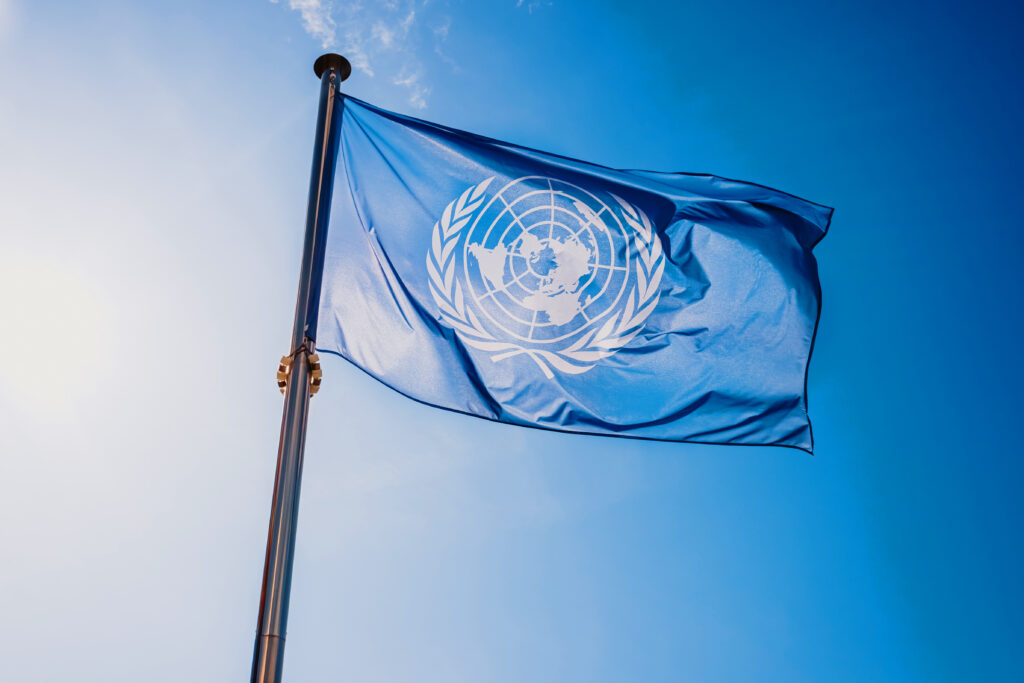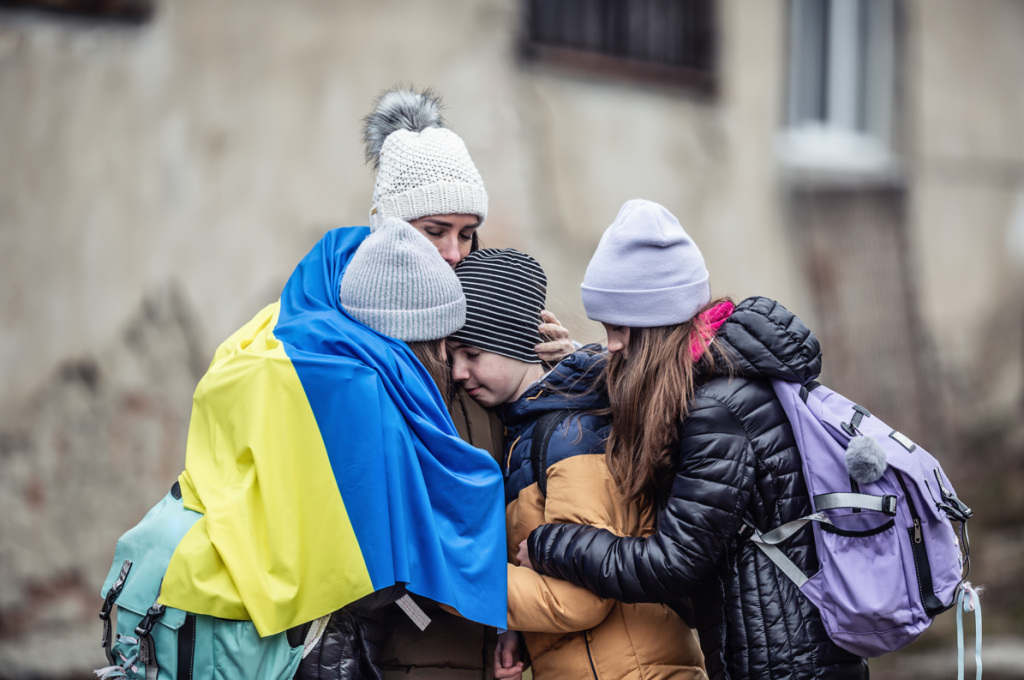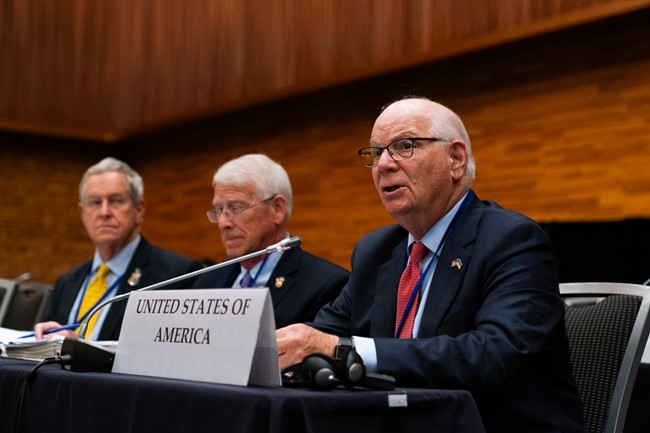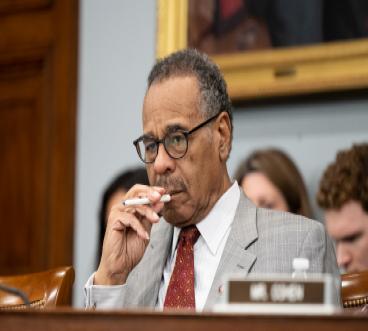By Ronald J. McNamara,
Policy Advisor
Cyprus’ unique location at the cultural crossroads of the eastern Mediterranean and important trade routes between Europe and the Middle East and beyond has shaped the island nation’s rich history. I recently returned to Cyprus to assess developments as the 35th commemoration of the Turkish invasion approaches and a significant portion of the country remains under occupation. Virtually every conversation during my visit, whether with officials or private citizens, touched on some aspect of the ongoing occupation of the country, the legacy of the 1974 invasion, or the prospects for a resolution of “the Cyprus issue.”
In a country with slightly less than a million people covering an area slightly more than half the size of Connecticut, one is hard-pressed to find a Greek Cypriot or Turkish Cypriot family that has not been affected in one way or another by the conflict and its lingering impact.
While the Cyprus conflict predated the 1975 signing of the Helsinki Final Act, many of the principles found in that historic document have particular applicability to the situation in Cyprus, including: territorial integrity of states; peaceful settlement of disputes; respect for human rights and fundamental freedoms, including the freedom of thought, conscience, religion or belief; and fulfillment in good faith of obligations under international law. Cyprus and Turkey were both original signatories to the Final Act.
Traveling to the remote Karpas peninsula, in northeastern Cyprus, I was able to speak with an elderly pensioner in Rizokarpaso, a town where thousands of Greek Cypriots once thrived.Today they number scarcely more than 200, the largest concentration of Greek Cypriots in the Turkish occupied north. A short distance from the main square, featuring a large statue of modern Turkey’s founder Kemal Atatürk on horseback, the gentleman described his existence amid a burgeoning population of newcomers from mainland Turkey. He explained that as elderly Greek Cypriots pass away in the area, their homes are occupied, often by “settlers.” The aged man, deeply rooted in the town, showed a fierce determination to remain despite the hardships, making clear that he would not be complicit with the effective cleansing of Greek Cypriots from the region. Within minutes after we sat down at a nearby cafe, a couple of young men sat conspicuously nearby, within easy listening distance from us, an action that seemed designed to intimidate.
The man pointed to a building across the street that serves as the school for the small number of Greek Cypriot children a short distance from the Orthodox Church, mainly used for funerals conducted by the lone cleric permitted to conduct such services in the region. According to the May 15 “Report of the Secretary-General on the United Nations operation in Cyprus,” humanitarian assistance was provided to 367 Greek Cypriots and 133 Maronites living in the northern part of the island.
While numerous mixed towns and villages existed throughout the country prior to 1974, today, the town of Pyla, partly located in the UN-monitored buffer zone, is the sole surviving bi-communal village, with around 500 Turkish Cypriots and 1,500 Greek-Cypriots. While local leaders from the communities described a generally harmonious and cooperative atmosphere, the reality is that interaction between the two remains limited, with separate schools, sports teams, municipal budgets, and police forces, among others.
Many of the people I met touched in one way or another on the ongoing talks between Cypriot President Demetris Christofias and the Turkish Cypriot leader, Mehmet Talat. In his February 28, 2008 inauguration, Christofias reiterated the requirements for a negotiated resolution of the Cyprus conflict and reunification of the country as a federal bi-zonal, bi-communal, with a single sovereignty, international personality and citizenship. Christofias and Talat have repeatedly reaffirmed their commitment to such a formula based on UN Security Council resolutions dating back to the 1970s.
The current talks, initiated by Christofias shortly after his 2008 election, focus on six main chapters, or themes, with corresponding working groups: governance and power sharing, European Union matters, security and guarantees, territory, property, and economic matters. Technical committees have also been established to consider crime, economic and commercial matters, cultural heritage, crisis management, humanitarian matters, health, and environmental matters. While formally conducted under the auspices of the UN, the talks are mainly being conducted directly between Christofias and Talat, with teams of experts focused on specific aspects of each topic.
A meeting with George Iacovou, President Christofias’ top aide on the current direct talks, helped put the negotiations in context against the backdrop of prior efforts to reunite the country, including the Annan plan, which the Greek Cypriots overwhelmingly rejected in a 2004 referendum. Officials, including government spokesman Stefanos Stefanou repeatedly emphasized that negotiations on a resolution of the conflict be by the Cypriots, for the Cypriots. That said, such an outcome depends in large measure on Turkey playing a constructive role as the leaders of the two communities seek to hammer out a comprehensive agreement.
Briefings by Foreign Minister Markos Kyprianou and other senior officials focused largely on the international dimension of the Cyprus issue. Central to the discussions was Turkey’s longstanding aspiration to join the European Union. Accession talks with Turkey began in October 2005.
In July of that year, the EU welcomed the country’s decision to sign a protocol adapting the Ankara Agreement to expand the existing customs union between Turkey and the EU to include all member states, including Cyprus. Simultaneously to the signing, Ankara issued a unilateral declaration, noting that its signature did not amount to recognition of the Republic of Cyprus. In response, the EU issued its own declaration on September 21, 2005 making clear that “this declaration by Turkey is unilateral, does not form part of the Protocol and has no legal effect on Turkey’s obligations under the Protocol.” Despite signing the adapted agreement, Turkish ports remain closed to Cypriot ships and airplanes. Cypriot government officials suggested that the status quo has cost the island nation millions in lost business.
EU foreign ministers meeting in Brussels on December 11, 2006 partially froze membership talks with Turkey over the impasse, suspending eight of the 35 chapters on the agenda of the accession negotiations, a step endorsed by the European Council on December 15. The Turkey 2008 Progress Report issued by the EU Commission reiterated the call for Turkey “to remove all remaining restrictions on the free movement of goods, including restrictions on means of transport regarding Cyprus.” Turkey’s accession to the EU would also require Ankara to work toward recognizing the Republic of Cyprus, including establishment of diplomatic relations.
The next periodic report on Turkey’s implementation of the Ankara Protocol is expected later this year. While Cyprus supports Turkey’s aspirations to join the EU, the passage of time has brought potential opposition to the surface, notably from France and Germany.
Property
Property, another chapter heading under active discussion, has enormous implications. According to government officials, the vast majority of properties in the occupied north were owned by Greek Cypriots. Upholding the property rights of the owners as they were prior to the invasion remains a major priority for the government, with restitution the preferred end result. Considerable real estate development in the north and the continued occupancy of their homes by strangers, has led many Greek Cypriot property owners to file cases with the European Court of Human Rights (ECHR) claiming their property rights were violated. In the case of Loizidou v. Turkey, the court held that “denial of access to property in northern Cyprus was imputable to Turkey” and awarded damages, finding that the applicant had “effectively lost all control over, as well as all possibilities to use and enjoy, her property.”
More recently, a judgment issued by the European Court of Justice (ECJ) in the case of Meletis Apostolides v. David Charles Orams and Linda Elizabeth Orams could have a chilling effect on foreigners purchasing property in the occupied territory. The ECJ affirmed that courts in other EU countries must recognize and enforce Cypriot court judgments. Cyprus joined the EU in 2004.
Since the partial lifting, in 2003, of restrictions imposed by authorities in the north on freedom of movement, Greek Cypriots for the first time in large numbers have been able to cross into the northern part of the country – visiting their homes and villages many had not seen since 1974. Increased movement in both directions followed, with over 15 million incident-free crossings.
A Greek Cypriot shared his experience of visiting his home for the first time since being forced to flee during the invasion. He discovered that a Turkish Cypriot family was living in the house. To his surprise, the father had meticulously collected and stored all of the owner’s family photos and presented him with the box at that first visit. Similarly, the occupant had placed crosses and other religious articles in the attic for safekeeping. A Turkish Cypriot expressed relief at the fact that some Greek Cypriot friends from his home village were living in his house and maintaining his lands in the southwestern part of the country. Unfortunately, these stories appear to be the exception rather than the rule.
Missing Persons
Of the many painful consequences of the 1974 invasion, perhaps none is as heartrending as that of missing persons. According to The Committee on Missing Persons, a total of 1493 Greek Cypriots, including five Americans, were officially reported missing in the aftermath of the conflict. Five hundred and two Turkish Cypriots had already been missing, mainly victims of inter-communal violence that erupted in the early 1960s. The remains of one of the Americans, Andrew Kassapis, were eventually recovered and returned. The cases of the other four remain open.
The Committee on Missing Persons in Cyprus, established in 1981, facilitates the exhuming, indentifying and returning of remains of missing persons. The CMP mandate is limited in that it does not extend to Turkey. The Greek Cypriot and Turkish Cypriot communities each have one member on the committee. A third member is selected by the International Committee of the Red Cross and appointed by the UN Secretary-General. While in Nicosia, I had an opportunity to be briefed separately by Elias Georgiades, the Greek Cypriot representative and Christophe Girod, the UN representative.
Operating on the basis of consensus, the committee does not attempt to establish the cause of death or attribute responsibility for the death of missing persons. Since becoming operational in 2006, an anthropological laboratory has analyzed the remains of several hundred individuals. According to the committee, remains of 530 individuals have been exhumed from more than 273 burial sites throughout the country. Of remains examined at the forensic facility, the youngest individual was 10 months old and the oldest 86 years old. Walking though the lab I noted that most of the remains under examination had visible signs of gun wounds to the head. The remains of over 160 individuals have been returned to family members as a result of the bi-communal field teams and forensic work undertaken at the lab. The U.S. contributed funds for a family viewing facility which opened in 2008.
Land Mines
A briefing at the Mine Action Center in Cyprus provided insight into another legacy of the 1974 conflict, the presence of thousands of anti-personnel and anti-tank mines. Established in 2004, the center has assisted in planning, coordinating and monitoring of demining operations, including land surveys as well as the actual clearance and disposal of mines. While thousands of landmines have been cleared to date, thousands more remain. The center’s goal is a mine-free buffer zone by the end of 2010. In addition to efforts undertaken within the framework of the UN, Cyprus’ National Guard has worked to clear anti-personnel mines. Of the 101 known or suspected minefields in the country about half are in the UN monitored buffer zone, with most of the remainder nearby. Briefers underscored the continued threat posed by minefields adjacent to the buffer zone, recounting incidents of migrants trying to cross from the northern part of the country to the government-controlled south finding themselves surrounded by mines.
Farmers on either side of the buffer zone are also at risk as they seek to cultivate the arable farming lands bordering the area. The experts described the clearing operations involved in the opening of the Ledras Street pedestrian crossing point in the middle of the Cypriot capital, Nicosia, in April 2008. The Mine Action Center is assisting in clearing operations paving the way for the opening of additional crossing points. In late June, President Christofias and Mr. Talat reached agreement on the opening of the Limnitis crossing point with access to and from Kokkina in the remote northwest, offering an opportunity for development and integration by Greek Cypriots and Turkish Cypriots.
The United Nations has maintained an operational force on Cyprus since the establishment of the United Nations Peacekeeping Force in Cyprus (UNFICYP) in March 1964, following the outbreak of intercommunal violence. The force, one of the longest existing UN peacekeeping missions, consists of 858 troops, 68 police, and 160 civilians. UNFICYP is responsible for maintaining the status quo along the de facto ceasefire lines of the Cyprus National Guard, to the south, and Turkish and Turkish Cypriot forces to the north and a buffer zone between the two. The buffer zone stretches 111 miles from east to west, with 214 square miles of land between the lines, constituting about three percent of the country’s territory. The distance of separation varies from barely more than an arm’s span in some places to about four miles. Numerous villages, including Pyla, mentioned above, are located in partially or entirely in the buffer zone.
The once bustling seaside city of Famagusta along the east coast remains deserted, a veritable ghost town, as it has since the mainly Greek Cypriot population was forced to flee during the second phase of the Turkish invasion in August 1974. A center for commerce and tourism, the city and surrounding region was the second largest in the country prior to the evacuation. It is home to nearly half of the people uprooted by the conflict. Standing on the beachhead just north of the city in the Turkish-controlled area the unpopulated city stretched as far down the coast as I could see. Abandoned hotels and high-rise apartment buildings rise from the sandy shore standing as a collection of steel skeletal frames liberated of their contents by plunder and the passage of time since their occupants were forced to flee.
Religious Cultural Heritage
The ancient Roman city of Salamis, located a short distance from Famagusta on the east coast, was the arrival point for St. Paul on his first missionary journey, accompanied by St. Barnabas, a native son of that city. Paul eventually made his way to Paphos, on the opposite side of the island, where his preaching led to the conversion of the Roman Proconsul, making Cyprus the first country governed by a Christian. A short distance from Salamis is the village of Enkomi, where according to tradition, Barnabas’ remains were buried following his martyrdom.
Among minorities throughout the country recognized by the 1960 constitution are: Maronite Christians number approximately 5,000; Armenians 2,500; and Latins (Catholics) 1,000. The overwhelming majority of Cypriots are Orthodox, with Muslims comprising the next largest faith community.
His Beatitude Chrysostomos II has served as Archbishop of New Justiniana and All Cyprus since November 2006. During our meeting he underscored the long history of harmony among faith communities in Cyprus. The archbishop voiced particular concern for those displaced by the 1974 invasion and stressed the importance of upholding human rights, including the rights of individuals to return to their homes. He contrasted the efforts taken by the authorities with the support of the Church to preserve mosques in the government-controlled area with the destruction of religious cultural heritage, including churches, monasteries and chapels in the north. Archbishop Chrysostomos II, who was joined by the Bishop of Karpasia, described the challenges faced by clergy seeking to travel to the occupied north, including those seeking to participate in religious services. The rare Orthodox services that are allowed to be conducted in the north are mainly for feast days of several saints, notably St. Mamas and St. Barnabas. Even such exceptional occasions have occasionally been marred by security forces preventing worshipers from crossing into the area. The Archbishop said that the Church would soon file a formal case with the European Court of Human Rights regarding its religious sites and other property in the occupied north.
In the aftermath of Turkey’s 1974 military invasion and ongoing occupation of the northern part of Cyprus, a precious piece of the country’s cultural heritage is at risk of collapse – Orthodox churches, chapels and monasteries as well as those of other Christian communities. According to Archbishop Chrysostomos II, over 500 religious sites in the area have been seriously damaged or destroyed. During my travels throughout the region, I visited a score of churches – each in various stages of deterioration, all plundered. In Lapithos, in the Keryneia region, the Agia Anastasia complex is now a tourist resort. I found the Monastery of Ayios Panteleemon, in Myrtou, reduced to little more than a pigeon coup, with bird droppings everywhere – a scene I encountered repeatedly. In each church visited the interiors were stripped of religious objects, including altars, iconostasis, icons, and fonts. In some, it was clear how frescos had been chiseled out of walls and ceilings. It was a surprise to see a single bell still hanging in one of the many bell towers I saw. The main church in Rizokarpaso and a few elsewhere in the Karpas region were noteworthy for the fact that they even had doors; most others I visited did not. One of the countryside churches I visited was being used for storage, with heavy farm equipment in the yard and plastic crates and large tractor ties filling the interior space. In Keryneia, I found that a small chapel in the port was being used by the authorities as a tourist information center and snack bar. According to Church sources, others have been converted into stables, shops, and night clubs.
In the village of Kythrea, a small Catholic chapel was reduced to a shell with no roof. Most of the main church had been converted into a mosque, along with a couple of others in the town, but for some reason a quarter of the structure remained in ruins. Another church, Agios Andronikos, located nearby was heavily damaged, with the rubble of the collapsed roof strewn about the interior space, with traces of frescoes still visible on the exposed walls. In the village of Stylloi, in the Famagusta region, the Profitis Ilias Church yard also serves as a cemetery. There I found desecrated ruins of graves with all of the crosses broken off of their bases and smashed. A shed in the corner of the yard was stacked with broken crosses and headstones. Another cemetery a short distance away was similarly in shambles. An adjacent Muslim cemetery was in meticulous condition.
The U.S. Agency for International Development has supported a number of restoration projects in the occupied north, including work at the Agios Mamas Church in Morfou, operated mainly as an icon museum. In Keryneia, the prominent belfry of the Archangelos Mikhael Church disguises the fact that the once venerated site has likewise been converted into an icon museum. Such collections reportedly contain a small fraction of the thousands of icons, sacred vessels, vestments, manuscripts, frescos, and mosaics looted from churches, chapels and monasteries in the north. Many stolen icons and other antiquities are placed on the auction block for sale on the international market, some making their way into U.S. collections. The Byzantine Museum, in Nicosia, featured an exhibit: “Hostages in Germany: The Plundered Ecclesiastical Treasures of the Turkish-occupied Cyprus.” In a recent case, two icons from the early 1600s taken from a church in the northern village of Trikomo, were seized in Zurich by Swiss police.
In stark contrast to the situation in the occupied area, in Nicosia I visited the Ömerge Mosque housed in the 13th century Church of St. Mary built by the Augustinian religious order. The recently refurbished mosque is a functioning place of worship. A short distance away in the old walled city is Bayraktar Mosque. When I visited the site there were large pallets of stone to be used to renovate the plaza in the mosque complex. Another example is the Mosque of Umm Haram, or Hala Sultan Tekke, a mosque and prominent Muslim shrine, located in Larnaca, southeast of the capital. According to Cyprus government sources, scores of other mosques and other Islamic places of worship are maintained in the south.
A visitor to Cyprus need not look far to discover the scars left by the artificial division of the country following the 1974 invasion and ongoing occupation. Since my earlier trip to that island nation eleven years ago, there has been progress on some fronts, most noticeably in terms of freedom of movement since the partial lifting, in 2003, of restrictions imposed by authorities in the north. According to officials, the majority of Turkish Cypriots hold Cyprus-issued EU passports, affording them free movement throughout the EU area, employment opportunities in member countries and other benefits. In addition, thousands of Turkish Cypriots cross into the south daily for work. Other steps have come about as a direct result of the talks between the leaders of the two communities initiated last year. It remains to be seen, however, if the current negotiations will produce a comprehensive and durable resolution to the challenges in Cyprus. Beyond practical steps to ease the day-to-day lives of Greek Cypriots and Turkish Cypriots, key principles such as sovereignty, independence, and territorial integrity as well as respect for human rights and fundamental freedoms are also at stake, with implications for conflicts elsewhere.
Numerous earlier diplomatic initiatives were launched, but in the end failed. A particular challenge remains the thorny issues of the tens of thousands of Turkish troops and settlers from mainland Turkey still in Cyprus today, outnumbering Turkish Cypriots. Other factors, especially Turkey’s stated desire to join the EU, should not be discounted and could prove decisive to the ultimate success or failure of the current process. Meanwhile, Christofias and Talat and their teams grapple with an array of tough issues as they seek to overcome the legacy of the past 35 years and build a brighter future for all Cypriots.

